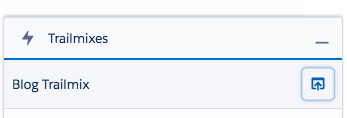| Tweet |
Lightning Testing Service Part 2 - Custom Jasmine Reporter
(Note: This blog applies to the Jasmine variant of the Lightning Testing Service)
Introduction
One of the cool things about Jasmine is how easy it is to add your own reporter. Compared to some of the other JavaScript testing frameworks I’ve used in the past, it’s entirely straightforward. Essentially you are implementing an interface, although as JavaScript doesn’t have interfaces it’s very much based on what you should rather than must implement. A Jasmine Reporter is a JavaScript object with the appropriate functions for the framework to call when something interesting happens. Even cooler is the fact that the framework first checks that you have provided the function before it is invoked, so if you don’t care about specific events, you just leave out the functions to handle those events and you are all good.
Functions
Some or all of the following functions are required to handle the various events that occur as test are executed - basically things commencing and completing:
- jasmineStarted/jasmineDone - called before any specs (tests) execute/once all tests have completed
- suiteStarted/suiteDone - called before a specific suite (group of tests) execute/once they have completed
- specStarted/specDone - called before a specific test executes/once it has completed
Once you have your object with the desired functions, it must be registered before any tests are queued:
jasmine.getEnv().addReporter(your_reporter);
and that’s all there is to it.
Example
Below is an example lightning component that creates a simple reporter to capture the success/failure of each suite/spec and log information to the console. Note that this relies on the Jasmine artefacts installed by the latest version of the Lightning Testing Service unmanaged package. The component is named KABJasmineReporter:
Component
<aura:component extensible="true">
<ltng:require scripts="{!join(',',
$Resource.lts_jasmine + '/lib/jasmine-2.6.1/jasmine.js',
$Resource.lts_jasmine + '/lib/jasmine-2.6.1/jasmine-html.js',
$Resource.lts_jasmineboot
)}"
afterScriptsLoaded="{!c.doInit}" />
</aura:component>
Controller
({
doInit : function(component, event, helper) {
helper.initialiseJasmineReporter(component, event);
}
})
Helper
({
myReporter : {
content : '',
suites : [],
totalSuccesses:0,
totalFailures:0,
totalTests:0,
output : function(message) {
console.log(message);
this.content+=message;
},
clear: function() {
this.content='';
this.suites=[];
this.totalSuccesses=0;
this.totalFailures=0;
this.totalTests=0;
},
getCurrentSuite: function() {
return this.suites[this.suites.length-1];
},
getCurrentSpec : function() {
return this.getCurrentSuite().specs[this.getCurrentSuite().specs.length - 1];
},
jasmineStarted: function(suiteInfo) {
this.output('Running suite with ' + suiteInfo.totalSpecsDefined + ' specs');
},
suiteStarted: function(result) {
this.output('Suite started: ' + result.description + ' whose full description is: ' + result.fullName);
this.suites.push({name : result.fullName,
specs : []});
},
specStarted: function(result) {
this.output('Spec started: ' + result.description + ' whose full description is: ' + result.fullName);
this.getCurrentSuite().specs.push({name: result.description,
failures: [],
failureCount: 0,
successes: 0});
},
specDone: function(result) {
this.output('Spec: ' + result.description + ' complete status was ' + result.status);
this.output(result.failedExpectations.length + ' failures');
for(var i = 0; i < result.failedExpectations.length; i++) {
var failure=result.failedExpectations[i];
this.output('Failure: ' + failure.message);
this.output(failure.stack);
this.getCurrentSpec().failures.push({message: failure.message,
stack : failure.stack});
this.getCurrentSpec().failureCount++;
this.totalFailures++;
}
this.output(result.passedExpectations.length + ' successes');
this.getCurrentSpec().successes+=result.passedExpectations.length;
this.totalSuccesses+=result.passedExpectations.length;
},
suiteDone: function(result) {
this.output('Suite: ' + result.description + ' was ' + result.status);
for(var i = 0; i < result.failedExpectations.length; i++) {
this.output('AfterAll ' + result.failedExpectations[i].message);
this.output(result.failedExpectations[i].stack);
}
},
jasmineDone: function() {
this.totalTests=this.totalSuccesses+this.totalFailures;
this.output('Finished tests');
this.output('Successes : ' + this.totalSuccesses);
this.output('Failures : ' + this.totalFailures);
this.output('Details : ' + JSON.stringify(this.suites, null, 4));
}
},
initialiseJasmineReporter : function(component, event) {
console.log('Initialising jasmine reporter');
var self=this;
this.myReporter.clear();
var env = jasmine.getEnv();
jasmine.getEnv().addReporter(this.myReporter);
}
})
A couple of tweaks to the jasmineTests app to include my reporter (and to limit to a couple of tests, otherwise there’s a lot of information in the console log):
App
<aura:application >
<c:KAB_JasmineReporter />
<c:lts_jasmineRunner testFiles="{!join(',',
$Resource.jasmineHelloWorldTests
)}" />
</aura:application>
Executing the app produces the following console output:
Initialising jasmine reporter
Running suite with 2 specs
Suite started: A simple passing test whose full description is: A simple passing test
Spec started: verifies that true is always true whose full description is: A simple passing test verifies that true is always true
Spec: verifies that true is always true complete status was passed
0 failures
1 successes
Suite: A simple passing test was finished
Suite started: A simple failing test whose full description is: A simple failing test
Spec started: fails when false does not equal true whose full description is: A simple failing test fails when false does not equal true
Spec: fails when false does not equal true complete status was pending
0 failures
0 successes
Suite: A simple failing test was finished
Finished tests
Successes : 1
Failures : 0
Details : [
{
"name": "A simple passing test",
"specs": [
{
"name": "verifies that true is always true",
"failures": [],
"failureCount": 0,
"successes": 1
}
]
},
{
"name": "A simple failing test",
"specs": [
{
"name": "fails when false does not equal true",
"failures": [],
"failureCount": 0,
"successes": 0
}
]
}
]
Conclusion
While this has been a simple example, there’s a lot more that can be done with custom reporters, such as posting notifications with the tests results, which I plan to explore in later posts.



